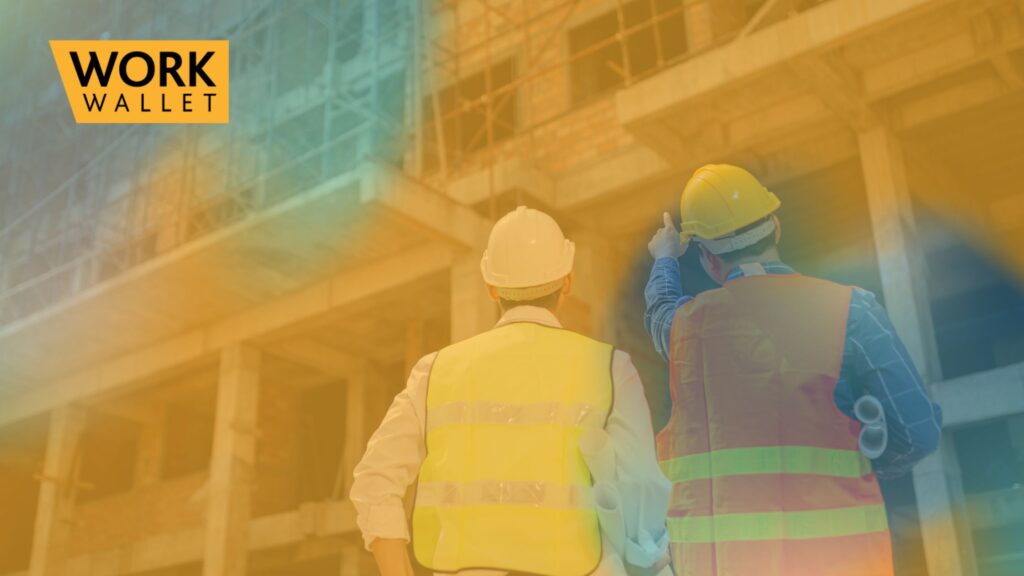What is a Permit to Work, and When Do You Need One?
15 January 2025

Ensuring workplace safety is a priority across all industries, but some tasks inherently involve high risks. Even with strong health and safety policies, certain activities require extra precautions to protect workers. This is where a Permit to Work (PTW) system comes in, and it provides a structured approach to managing hazardous work.
At Work Wallet, we specialise in digital health and safety solutions. We aim to help businesses maintain compliance, reduce risks, and improve workplace safety through efficient Permit-to-work systems.
What is a Permit to Work (PTW)?
A Permit to Work is a formal, written authorisation allowing workers to perform hazardous tasks under controlled conditions. It ensures that:
✔ The work type and associated risks are identified.
✔ Safety precautions are put in place before work begins.
✔ Only trained and competent personnel carry out the work.
✔ The Work is supervised, monitored, and documented.
A PTW system helps employers control risks by ensuring that work doesn’t begin until all safety checks, risk assessments, and approvals have been completed.
What Does a Permit to Work Include?
A typical document includes:
- Type of Work (e.g., electrical, confined space, hot work).
- Work location and duration.
- Equipment and PPE required.
- Hazards and risks identified.
- Precautionary measures are to be taken.
- Safe work procedures to follow.
- Signatures of authorised personnel approving the work.
- Permit closure requirements once the work is completed.
When Do You Need a Permit to Work?
Not every job requires a PTW, but it is essential for high-risk tasks where hazards cannot be eliminated through standard safety measures. Below are some everyday situations where a PTW system is required:
1. Hot Work
- Includes welding, grinding, soldering, and cutting.
- Generates heat, sparks, or open flames that could ignite flammable materials.
2. Cold Work
- It covers mechanical work, chemical handling, and lifting operations.
- No heat is involved, but the task still poses significant risks.
3. Electrical Work
- Work involving high-voltage or live electrical equipment.
- Includes installation, maintenance, and repairs.
4. Working at Height
- Any task performed two metres or more above ground level.
- Requires fall protection measures such as harnesses and guardrails.
5. Confined Space Entry
- Work inside tanks, tunnels, ducts, or sewers where there is a risk of asphyxiation or entrapment.
- It often requires gas testing and ventilation procedures.
6. Ground Disturbance & Excavation
- Includes digging, mining, and foundation work.
- Risks include ground collapse, buried utilities, and hazardous gas exposure.
7. Chemical Handling
- Work involving toxic, corrosive, or flammable chemicals.
- Requires strict handling and disposal procedures.
8. Breaking Containment
- Involves opening pipelines, storage tanks, or pressure systems.
- There is a high risk of gas leaks, spills, or explosions.
If you’re unsure whether a Permit to Work is required for a task, a risk assessment should be carried out to determine the potential hazards and necessary precautions.
How Does the Permit to Work Process Work?
Implementing a Permit to Work system involves a structured process:
Step 1: Request & Risk Assessment
✔ The worker or supervisor requests a permit by completing a form.
✔ A competent person assesses the risks and safety measures required.
Step 2: Authorisation & Approval
✔ The authorised person (manager or safety officer) reviews the request.
✔ If all safety conditions are met, the permit is approved and signed.
Step 3: Work Execution
✔ Only approved personnel carry out the work following the specified safety procedures.
✔ work is monitored and documented throughout the process.
Step 4: Completion & Permit Closure
✔ Once the Work is completed, the person in charge signs off on the permit.
✔ The authorised person confirms the site is safe and formally closes the permit.
✔ If the project requires an extension, a new permit must be issued.
Permit to Work: More Than Just a Document
A permit-to-work system is not just a paperwork exercise—it is a critical safety tool. However, it does not replace standard risk assessments, method statements, or other safe systems of work. Instead, it acts as an additional control layer to prevent accidents and ensure legal compliance.
Work Wallet: Your Digital Permit to Work Solution
Managing Permit to Work systems manually can be time-consuming and prone to errors. That’s why Work Wallet offers an innovative, digital solution to help businesses:
✔ Create, approve, and track permits in real time.
✔ Automate safety checks and notifications.
✔ Improve compliance and reduce paperwork.
✔ Ensure clear communication between teams.
Get Started Today
If you’re looking to streamline your Permit to Work system, Work Wallet can help. Contact us today to book a demo and see how our digital health & safety solutions can enhance workplace safety.
Share post
More Posts
A Guide to EHS Compliance: Insights from Work Wallet
Jan 2025
At Work Wallet, we are dedicated to empowering businesses to streamline their EHS (Environment, Health, and Safety) compliance processes. This...
What is Mandatory Occurrence Reporting?
Jan 2025
At Work Wallet, effective safety management is the cornerstone of building trust and protecting lives. The Building Safety Act 2022...




